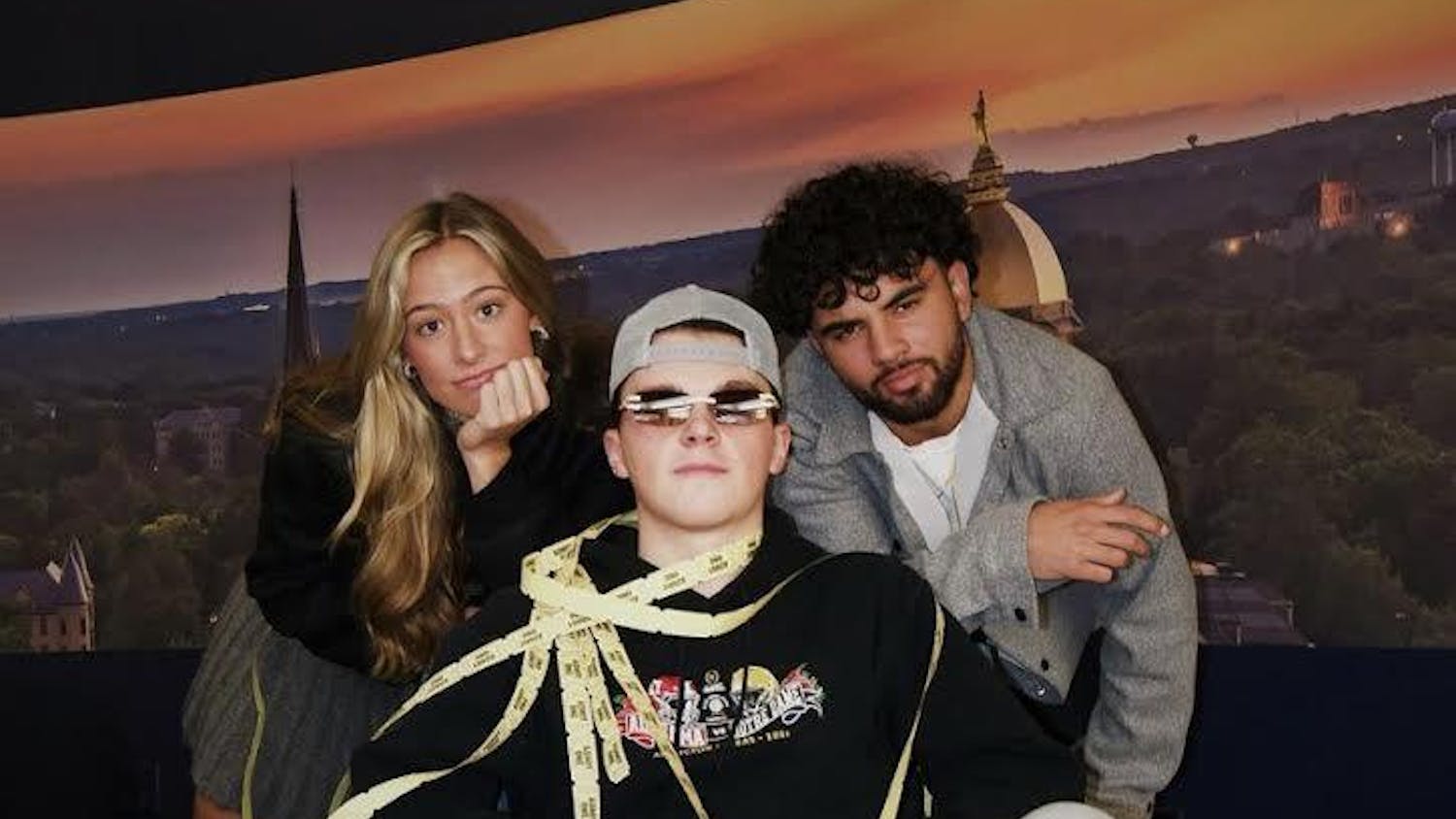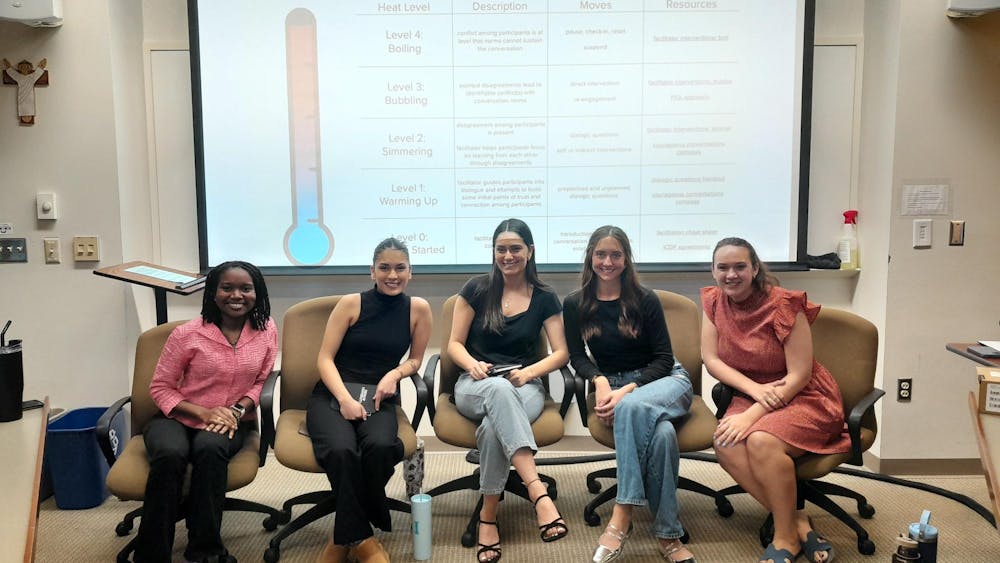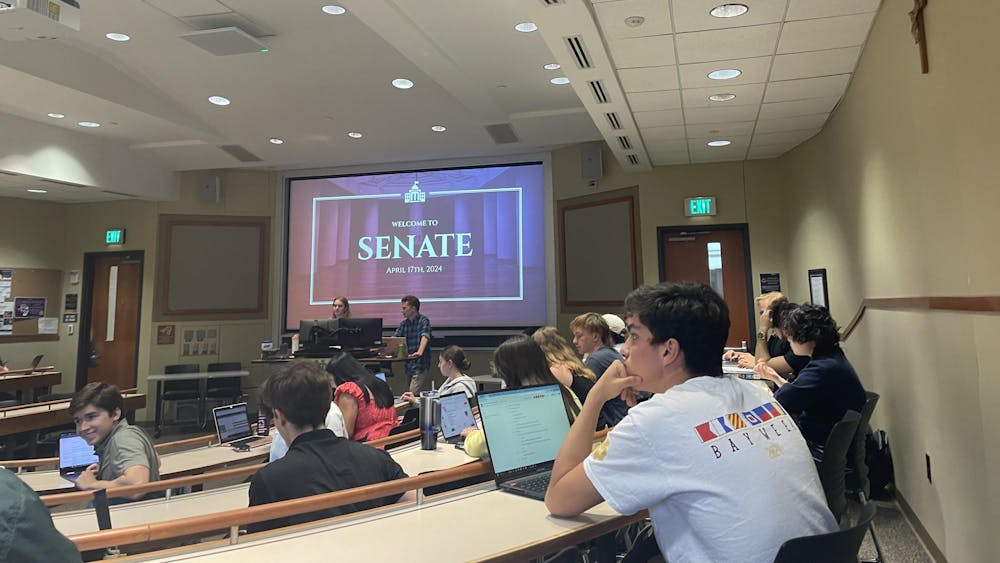Editor’s Note: This is the first story in a two-part series examining the ways Native language and cultural identity are being kept alive by the students of Notre Dame. To learn more about their reflections on language and culture, explore these audio and visual clips.
While Fr. Edward Sorin and the Congregation of Holy Cross were given the University’s land by the Bishop of Vincennes, this region of Northern Indiana was not uninhabited.
“There’s a history of peace, art and culture on this spot that predates Fr. Sorin,” professor Brian S. Collier said. “When Fr. Sorin arrived, there was already a chapel here. The Pokagon Potawatomi was already worshiping here.”
If anything, this is what Collier wants students to know about Notre Dame. Collier, a professor and historian with a Ph.D in Native American Studies, spends much of his time trying to ensure Native history does not become a thing of the past. 
Collier said Catholicism was the commonality that linked Sorin and Leopold Pokagon, the leader of the Pokagon Band of the Potawatomi. While it was originally the Pokagon’s ancestral land, Collier said because of this Catholic connection, the Pokagon and the Congregation of the Holy Cross were able to live in relative harmony together on the land.
Since 2013, Collier has run the Native American Initiatives (NAI) program at Notre Dame which, he said, initially started as a “faculty book club” for faculty and staff with degrees in Native American history. Soon, however, the program grew to sponsoring community members to come speak on Native issues at Notre Dame. NAI also works with area students from the Pokagon Band of the Potawatomi.
While the program works to support Native students, whether on campus or in the community, NAI also works as an outreach program for other students who are interested in Native history. Collier said that students often “wonder what they can do to support native causes.” The biggest thing, he said, is becoming aware of whose land they grew up on.
“People should come to be aware that there’s been sequential immigration on this very land,” he said. “They’re not the first people there and they won’t be the last people there.”
This awareness can translate to getting to know the Native students and Native student groups on campus.
“Most people don’t really know we’re a thing,” Alan Mychal Boyd, a Notre Dame senior, said about the Native American Students Association of Notre Dame (NASAND).
Boyd, who is the co-president of NASAND, said NASAND is not really supported by the University as a whole, but by the people who work within the University.
“A lot of faculty and departments [at Notre Dame], especially the Multicultural Student centers, are awesome,” he said. “I think this is true for any native group on any campus — you have to find your support within certain parts of the University.”
But, it can be hard for Native students to find support on campus, especially, Boyd said, since this year there are currently no native faculty that work with NASAND at the University.
“That’s one thing that we’ve been really pushing and fighting for this past year...at least one Native faculty member would be amazing,” he said. “It’s important because, one, it shows that we’re here and that we have a person at the University who actually understands where we’re coming from as a whole. But, also, it just makes it so much easier to get things like a Native Studies minor or just better conditions.”
The University has debated the induction of a Native American Studies minor for years. Boyd said that a Native American Studies minor would give Native students “a kind of authority,” and give them a chance to learn more about their own individual nations, as well as other Native nations.
However, learning about Native nations can be a challenge, Boyd said, especially when so few classes choose to even address the history and contributions of Native nations and Indigenous Peoples.
“So, any [class] that’s not specifically about Indigenous people usually doesn’t mention them whatsoever,” he said. “I think the most I got out of a class was our Intro to American Politics — it wasn’t in a lecture, it was in a textbook. All it was was one paragraph summarizing hundreds of years of civil rights and struggles with natives. It didn’t even mention that there were individual Native nations.”
Over the years, this representational tension has only been exacerbated by the presence of the 12 Christopher Columbus murals on campus. On Jan. 20, however, it was announced that the University would be covering the murals. But yet, so far this year, the murals still remain uncovered.
NASAND co-president junior Mikaela Murphy said that while ultimately she was happy with the decision to cover the murals, she would have appreciated more communication from the administration.
“I am very happy with the decision that was made to cover the murals,” she said. “But I think it should have been something more permanent. I think President Jenkins should have thought about us when he made that public announcement without consulting us, because it led to us getting a lot of hate when we had nothing to do with the decision.”
Paul J. Browne, the vice president of Public Affairs and Communication, said “Fr. Jenkins consulted widely before making a decision about the murals.”
While discussions about the murals have all but stopped, Collier said he still finds it hard to tell prospective Native students about the murals.
“From my own experience, when Native students come on tour and when they visit us, they always want to come inside the Main Building and I struggle with telling them about the murals,” he said. “I get some harsh reactions on why Notre Dame would have something like that. There is some potential harm to our larger community in placing them in such a prominent spot.”
Boyd said he did not know Notre Dame had such murals until his third week on campus. Knowing about the murals as a prospective student might have impacted his decision to attend Notre Dame, he said.
“I grew up in a culture where Columbus was a symbol of colonialism, a symbol of extermination and forced conversion and exploitation,” Boyd said. “So, I think, coming here and seeing [the Columbus murals] would have certainly affected my decision. Who people admire says a lot about them.”
The lack of representation for Native and Indigenous people is a problem that persists not only in the tri-campus community, but in the country as well. However, some strides are being made towards inclusivity, specifically with the Frank LaMere Native American Presidential Forum held on Aug. 19 in Sioux City, Iowa.
Boyd, and other students from NASAND, were able to attend the forum, which was the first of its kind to place focus on Native issues.













